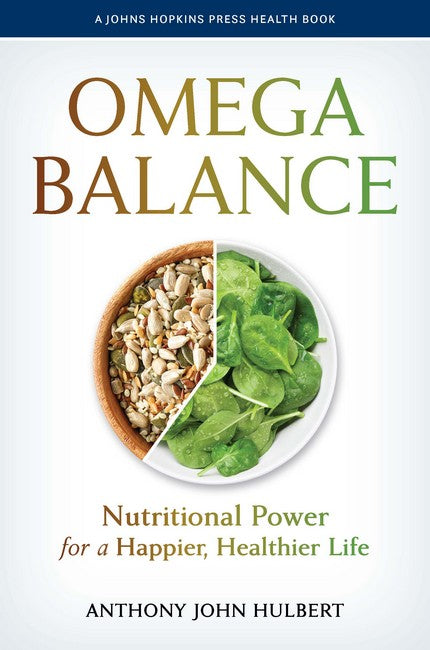Anthony John Hulbert (UNSW, AUS), PhD, DSc, is an internationally renowned researcher on metabolism, longevity and nutrition. He is emeritus professor in Science, Medicine, and Health at the University of Wollongong, Australia.
Description
Preface I. Food and Diets 1.. Essentials of nutrition: an evolutionary perspective The discovery that certain fats are essential in the human diet How nutrients become essential components of the diet:(i) vitamins: ascorbic acid as an example(ii) the building blocks of proteins: amino acids Being an animal 2. Omega-balance of foods: seeds, leaves and meats The "omega-balance" concept Vegetable oils and their products are the dominant source of omega-6 Nuts and grains provide omega-6 but negligible omega-3 fats Unusual seeds: some beans provide both omega-3 and omega-6 fats Green-leaves are important sources of omega-3 The difference between plant-based and animal-based foods Meats are significant but variable sources of both omega-3 and omega-6 Dairy foods and animal fats are sources of both omega-3 and omega-6 Poultry and poultry products are low in omega-3 fats Seafood is high in omega-3 and low in omega-6 fats Key influence of 'seeds' and 'leaves' on omega-balance of animal foods Importance of meals rather than individual foods Some general principles 3. Earlier diets: from paleo-times to the mid 20th century Insights from our anatomy and physiology The use of isotopes to determine past diets Paleolithic diets: Neanderthals and early modern humans The diet of recent hunter-gatherers: the ethnographic evidence Characteristics of a contemporary Paleolithic diet Neolithic and later diets: the beginnings of agriculture Isotopes in hair keratin: important evidence of early diets Pottery: what was stored or cooked in it The emergence of milk and dairy in the adult diet Case study 1: PUFA in the U.S. food supply, 1910 to 1960 4. The omega story: diet changes over the last half-century The provision of fat in the world food supply: 1961-2018 The global commodity boom in vegetable oils The dramatic rise of ultra-processed food Case Study 2: PUFA in U.S. food supply, 1961-2010 Dietary surveys of different populations Changes in traditional diets: Maasai and Inuit as examples Trend I: the shift from animal fats to vegetable oils Trend II: the grain feeding of livestock Trend III: the decline of full-fat dairy Trend IV: the rise of pork and poultry 5. The importance of cell membranes and the link with diet Visible and invisible fats Membrane composition: membrane fats and membrane proteins Saturated, monounsaturated and polyunsaturated fatty acids: the differences The importance of membranes for being 'alive' Membranes and the cost of living: insights from different species The behaviour of membrane fats: fluidity and membrane remodelling Diet fat and membrane composition: an experiment with rats Diet omega-balance: an experiment on myself Omega-3 and omega-6: different effects on membrane processes An important membrane fatty acid: arachidonic acid, 20:4w-6 The omega story so far II. CONSEQUENCES and SOLUTIONS 6. . Obesity and diabetes The obesity epidemic is not a morality tale Low energy expenditure, high food intake or something else? High-fat diets? Diet omega-balance and human obesity Membrane omega-balance and human obesity Omega-6 fats and the development of fat cells 'Munchies' and the endocannabinoids Role of PUFA in making fat from excess dietary carbohydrates The diabetes epidemic: emergence of syndrome X Metabolic syndrome, insulin resistance and membranes Diet omega-balance and glucose tolerance: my own experiment A larger syndrome? 7.. Cardiovascular disease and inflammation Ancel Keys and the emergence of the diet-heart hypothesis A trip to Greenland: the Eskimo paradox and omega-3 Diet omega-balance and cardiovascular disease The French paradox: wine or cheese? The Israeli paradox: omega-6 and heart disease So, what is the cause of coronary heart disease? Inflammation: the role of omega-6 PUFA The influence of diet omega-balance on inflammation Chronic inflammation: linking the 'modern epidemics' 8. Allergies, auto-immune diseases and cancer Diseases associated with chronic inflammation Asthma and allergies Rheumatoid arthritis Type 1 diabetes Multiple sclerosis Inflammatory bowel disease Chronic obstructive pulmonary disease Macular degeneration Chronic inflammation and cancer 9. On the brain and on pain The importance of membrane 22:6w-3 in brain function The beginning: early fatty acid nutrition and brain development Avoiding the end: cognitive decline and dementia The middle: diet omega-balance and normal brain function Diet omega-balance and chronic pain 10. Mental Health and Happiness Diet omega-balance and emotion: anxiety, aggression and violence Diet omega-balance and depression: "the inflamed mind" From a 'traditional' to a 'modern' diet: the Inuit example 11. Of mice and men Lessons from the Fat-1 mouse 12. The omega story and solutions: food composition, labels and diet choices. Change without knowledge and understanding Consequences and co-morbidities Omega-balance not minimum requirements The rise of trans fats A long life? A happy life? Food labels and databases Dietary guidelines Some Final Comments Acknowledgments Appendix I: List of foods: omega-balance and PUFA content Appendix II: List of fatty acids Notes Index

